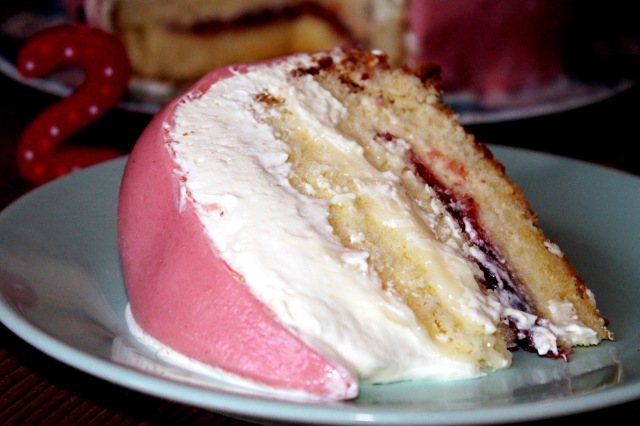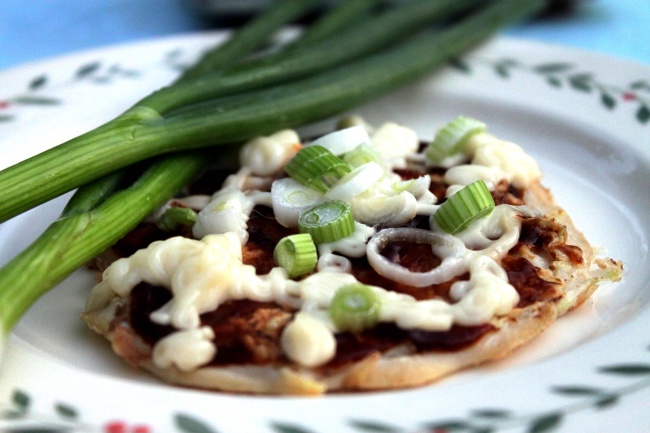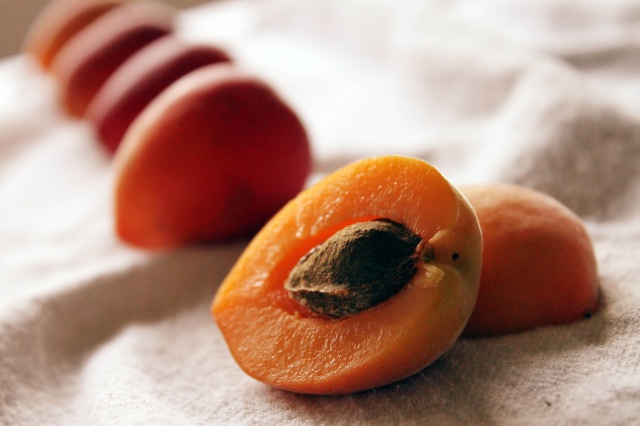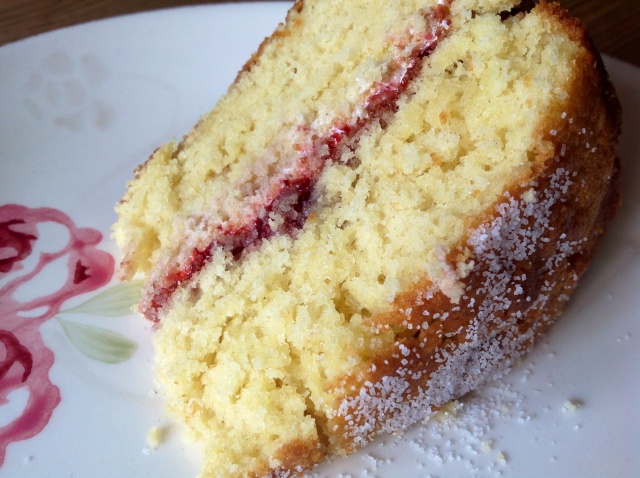Although I find the current trend for referring to little girls as princesses somewhat depressing – as if that is the ultimate aspiration – I opted to bake The Little Hen a prinsesstårta for her second birthday. This sumptuous Swedish confection is so named because the princesses Margaretha, Märtha and Astrid were said to be smitten with the cake baked by Jenny Åkerström during the 1930s. An impressively precarious dome composed of light sponge, jam, crème patisserie and whipped cream layers – capped with a marzipan mantle – it isn’t hard to understand the enduring popularity of this concoction. So popular is it, that in Sweden, the 3rd week of September is officially prinsesstårta week and 50,000 of the cakes are sold annually!
Princess cakes are traditionally a delicate pistachio green and look exceedingly pretty when adorned with a pink rose, often fashioned from marzipan. However, for The Little Hen’s birthday, I coloured the marzipan palest pink and popped a number candle on the top. I’ll be honest, this is a fairly daunting cake and seems to have the potential for disaster at various stages (in reality, it wasn’t nearly as fiddly as I’d envisaged). Fortunately, it’s not too dissimilar to a bombe-like, three dimensional English trifle, so fear not – if it collapses it will still taste delicious (and you can airily claim that it was intended to be a Scandinavian riff on a trifle all along).
Top Tips:
My sponge had a sugary, crackly top after baking (like a trifle sponge). I removed these shards for easier slicing.
When waiting for the crème patisserie to thicken, switch back to a whisk if it begins to look lumpy.
If the crème patisserie does happen to remain lumpy, give it a quick sieve and it should be lump-free once more.
Rolling the marzipan out on a Teflon or pastry sheet makes things much easier.
White marzipan is far easier to colour than golden.
You can make the sponge cake and crème patisserie the day before.
If you really, really loathe marzipan then you can use fondant icing instead (sssh, I won’t tell…)
Recipe
Cake
4 eggs
200g sugar
80g cornflour
60g plain flour
1 teaspoon baking powder
Crème Patisserie
4 egg yolks
100g sugar
25g Cornflour
350ml milk
1 teaspoon vanilla extract
Additional Ingredients
568-600ml whipping or double cream
1 tablespoon sugar
Strawberry or raspberry jam
500g marzipan
Food colouring
Icing sugar for rolling out
Semolina or breadcrumbs for the tin
Method
Cake
Preheat the oven to 170C/325F/Gas Mark 3
Butter a fairly deep 20cm tin and dust with semolina or breadcrumbs.
Whisk together the eggs and sugar until pale, thick and creamy. Combine the flours and baking powder and deftly fold into the eggs. Take care not to knock the air out or your cake will not rise properly. Bake for 35-40 minutes. Turn out and cool on a wire rack.
Crème Patisserie
Whisk together the eggs and sugar. Add the cornflour and whisk again so there are no lumps. Heat the milk and vanilla almost to boiling point. Pour over the egg mixture, whisking vigorously. Pour back into the pan and cook over a medium-low heat whilst stirring continuously. Once thickened, put the crème patisserie into a bowl and cover immediately to prevent a skin forming.
Assembly
Slice your cake into three layers. Spread a thin layer of jam over the base, leaving a border so the filling doesn’t ooze out the sides.
Place the next layer on top and spread over ¾ of the crème patisserie – again leaving a small border.
Whip the cream with the sugar and 1 teaspoon of vanilla extract until you have firm peaks.
Place the final layer of cake on top and cover with whipped cream. Smooth the cream around the edges of the cake and create a mounded dome on top. Chill for 2-4 hours to allow the cream to firm up enough to support the marzipan.
Colour the marzipan as you wish and roll out so that it is large enough to cover the entire cake. Roll the marzipan around the rolling pin and place it behind the cake. Roll it across and over towards yourself so the cake is covered. Smooth out any wrinkles and trim the excess. Decorate with a rose or candle. You can hide any imperfections with a flurry of icing sugar or some decoratively piped icing or chocolate.
Serve as soon as you are able, to rapturous admiration (store any leftovers the fridge). Being all birthday-ed out, The Little Hen was overtired and in an utterly foul mood so didn’t appreciate all my hard work. Fortunately, everyone else thoroughly enjoyed the cake and I think it may become a birthday tradition from now on.













